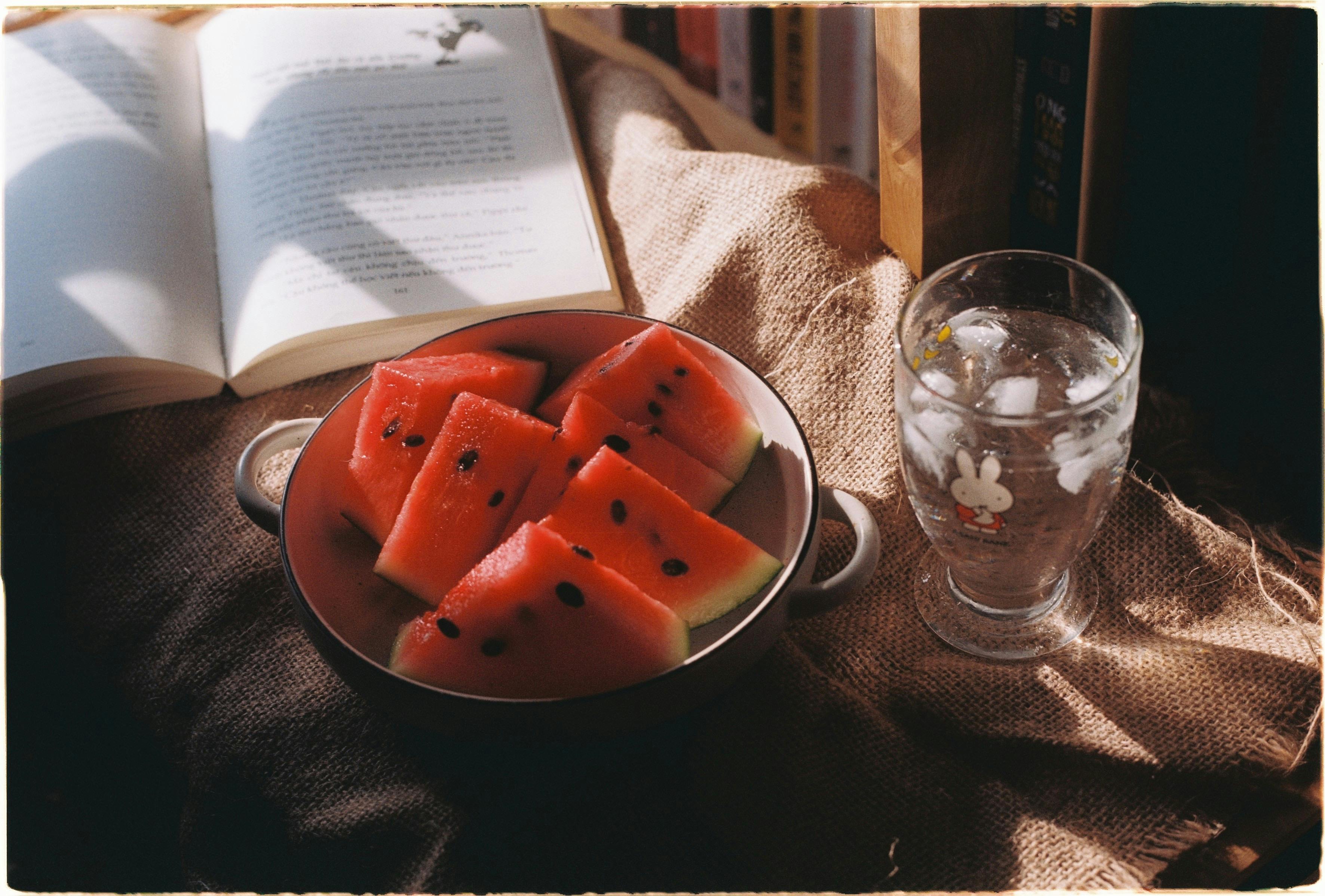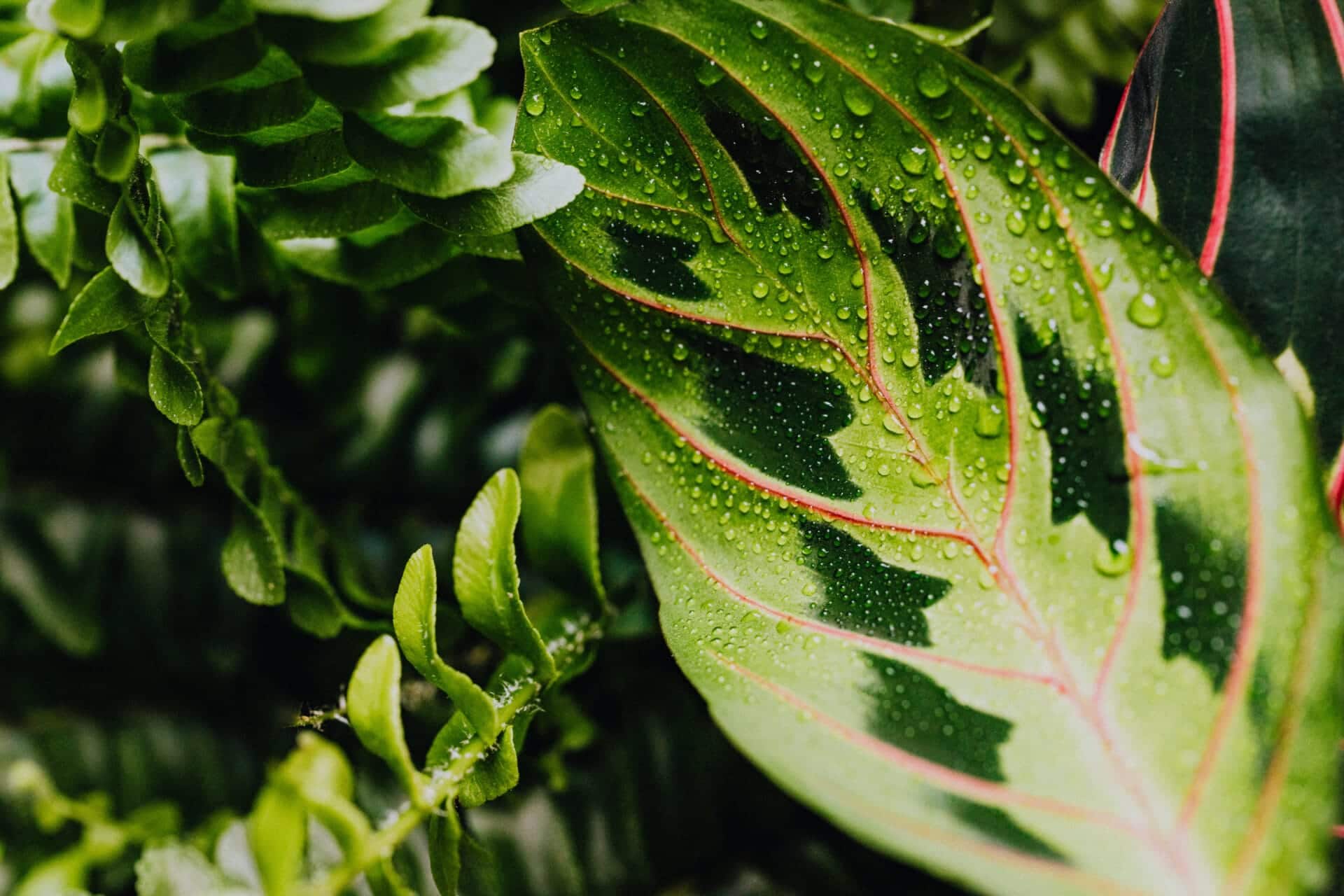Calatheas are a vibrant and beautiful type of houseplant that come in many different varieties. They are known for their unique, colorful foliage and can be a great addition to any home. An important part of caring for a calathea is knowing how often to water it. Proper watering will help keep your plant healthy and happy, so it is important to get the frequency right. In this article, we will discuss how often you should water your calathea, as well as other helpful tips that you can use to ensure your plant stays healthy.Calatheas should be watered once a week, making sure the soil is completely saturated. It is important to allow the topsoil to dry out between waterings. During their active growing season, between spring and fall, Calatheas may need to be watered more often. It is also beneficial to mist the leaves every few days to increase humidity around the plant.
Climate
Calathea plants prefer warm climates, ideally between 65 and 80 degrees Fahrenheit. If temperatures drop below 55 degrees for an extended period of time, the plant can suffer from cold damage. It is important to pay attention to the local climate when deciding when and how much to water a Calathea plant.
Light
Calathea plants do best in bright, indirect light. If a Calathea is placed in direct sunlight, it can cause the leaves to become scorched or yellow. Keeping the plant in bright, indirect light is important for its health and growth.
Soil
When watering a Calathea plant, it is important to make sure the soil is well-draining and not soggy. Calatheas need moist soil but do not react well when sitting in wet soil for too long, as this can lead to root rot.
Humidity
Calatheas also prefer high humidity levels; they are native to tropical rainforests and need humidity levels of at least 50%. If humidity levels drop too low, the plant can become dry and suffer from brown tips or edges on its leaves. Keeping a humidifier nearby or misting the leaves on occasion can help keep humidity levels up.
<h3
Different Types of Calathea and Their Water Requirements
Calathea is an ornamental houseplant that comes in a variety of shapes, sizes, and colors. There are many different types of Calathea available, each with its own unique characteristics and water requirements. The most popular Calathea varieties include the Calathea veitchii, Calathea medallion, and the Calathea ornata.
The Calathea veitchii is a large bushy plant that can reach up to three feet in height. It has deep green leaves with yellow stripes and purple undersides. This variety needs plenty of water to stay healthy and should be watered regularly during the growing season.
The Calathea medallion is a smaller plant that grows to around two feet in height. It has velvety green leaves with yellow stripes and purple undersides. This variety needs less water than the veitchii but still requires regular watering during the growing season.
The Calathea ornata is a medium-sized plant with dark green leaves that have ruffled edges and pink undersides. This variety needs moderate amounts of water but should not be over-watered as it can cause root rot or other problems.
No matter which type of Calathea you choose, it’s important to provide the right amount of water for optimal health and growth. Over-watering can lead to root rot or other problems, while under-watering can cause leaves to yellow or wilt. The best way to determine how much water your particular type of Calathea needs is to check the soil every two or three days during the growing season and adjust your watering schedule accordingly.
The Benefits of Proper Watering of Calathea
Calathea is a popular houseplant that is prized for its striking foliage. While these plants are relatively easy to care for, proper watering is essential for healthy growth. When done correctly, proper watering of Calathea can help keep your plant healthy and thriving. Here are some of the benefits you can enjoy when you take the time to water your Calathea correctly:
One of the main benefits of proper watering is increased growth. Proper watering encourages the roots to grow and spread out more, leading to more foliage and a fuller looking plant. This will also help with blooms and flowers if your Calathea has them. Properly watered plants will also be more resistant to disease and pests as well.
Another benefit of proper watering is improved coloration in the leaves. When Calathea are watered correctly, they tend to have brighter, more vibrant foliage. This can help make your plant stand out in any room or garden.
Finally, properly watered Calathea tend to be hardier plants overall. This means they will be able to withstand changes in temperature or light more easily than plants that are not given enough water or too much water. In addition, properly watered plants tend to be less prone to wilting in hot weather or drying out in cold weather.
Overall, taking the time to water your Calathea correctly can provide many benefits for your plant and ensure it grows strong and healthy for years to come. With patience and consistency, you can enjoy vibrant foliage and blooms from your beloved houseplant year after year!
Signs of Overwatering in Calathea
Calatheas are a popular houseplant and are known for their beautiful foliage. However, like most plants, they can suffer from overwatering. Signs of overwatering include yellowing leaves, wilting leaves, brown spots on leaves, root rot, and drooping stems.
Yellowing leaves are one of the first signs of overwatering in Calathea plants. The plant’s normally vibrant green foliage will start to turn yellow and the tips and edges may start to curl. This is a sign that the plant is not getting enough oxygen due to too much water in the soil.
Wilting leaves can also be a sign that your Calathea is being overwatered. Wilting leaves will be limp and may even look like they are deflated. This is an indication that the plant’s roots are not getting enough oxygen due to being waterlogged.
Brown spots on the leaves of your Calathea can also be a sign of overwatering. Brown spots usually appear in clusters and can cause the whole leaf to discolor or die off entirely if left unchecked.
Root rot is another sign of overwatering in Calatheas. Root rot occurs when the soil around the plant’s roots becomes waterlogged and begins to decompose, causing the roots to die off or become diseased.
Finally, drooping stems can also be a sign that your Calathea is being overwatered. If your Calathea has drooping stems it means that it does not have enough energy to keep them upright and healthy due to too much water in its soil.

Signs of Underwatering in Calathea
Calatheas are popular houseplants renowned for their vibrant leaves and bold colors. While they are relatively easy to care for, underwatering can quickly take its toll on these plants. If your Calathea is not getting enough water, you may notice several signs of distress.
The most obvious sign of underwatering is wilting. The leaves will quickly start to curl inwards and droop, giving the plant a sad appearance. The leaves may also appear thin and papery if they have been deprived of water for too long.
The soil should also be taken into account when assessing your Calathea’s watering needs. When the soil is dry and crumbly, it means that it is time to water your plant again. If the soil remains moist for extended periods, this could be an indication that you have been overwatering your plant instead.
In addition, brown leaf tips and edges can be another sign that your Calathea is not getting enough water. This can be caused by a lack of humidity, so consider misting the leaves of your plant or placing it near a humidifier to increase the moisture content in the air around it.
If you think that your Calathea might be underwatered, try increasing its watering schedule or experimenting with different potting mixes to improve drainage. With some extra love and attention, your Calathea should start looking vibrant and healthy again soon!
Watering Basics
Watering your Calathea is one of the most important aspects of keeping it healthy. The key to success is to keep the soil moist, but not saturated. It’s best to water your Calathea when the top 2 inches of soil are dry. Do not wait until the entire pot has dried out as this can cause irreversible damage. You should also avoid overwatering, as this can lead to root rot and other problems. If you’re unsure whether your Calathea needs water, a good rule of thumb is to stick your finger in the soil up to your knuckle. If it’s dry, go ahead and give it a drink!
Using The Right Water
It’s important that you use filtered or distilled water when watering your Calathea. Tap water contains minerals and chemicals that can build up in the soil over time and cause harm to your plant. If you don’t have access to filtered or distilled water, let tap water sit out for 24 hours before using it on your Calathea.
Temperature Matters
The temperature of the water you use for your Calathea is also important. It should be room temperature or slightly warmer; cold water can shock your plant and potentially cause damage. Watering in the morning is ideal as this gives the plant plenty of time to absorb what it needs before nightfall.
Extra Tips
When watering your Calathea, make sure you thoroughly soak the soil until excess moisture begins to run out of the drainage holes at the bottom of the pot. This will ensure that all parts of the root system get equal amounts of moisture. Additionally, misting can help keep humidity levels high around your plant which will help prevent brown tips on its leaves.
Following these tips will help ensure that your Calathea stays healthy and vibrant for years to come!
Soil Requirements for Your Calathea
Calathea thrive best in soil that is both well-draining and moisture-retentive. Choose a potting mix with a neutral pH balance and plenty of organic matter. You can also add perlite to the potting mix to improve drainage and aeration. If you are growing your Calathea in a container, make sure the pot has drainage holes at the bottom to prevent waterlogging. To ensure optimal growth, it is also important to fertilize your Calathea regularly with an all-purpose fertilizer.
When watering your Calathea, it is important not to overwater. The soil should be kept moist but not soggy. Check the moisture level in the soil by sticking your finger into the soil up to two inches deep. If the soil feels dry, it’s time to water your plant. It is also important to avoid letting your Calathea sit in standing water for too long as this can cause root rot and other problems.
Finally, make sure you repot your Calathea every few years as they don’t like being root bound for too long. When repotting, use fresh potting mix and a new pot with good drainage holes at the bottom.

Conclusion
Calatheas are beautiful plants that require a little more care than other houseplants. In order for them to thrive, you need to make sure you are watering them regularly, but not overwatering them. A good way to ensure you are not overwatering is to make sure the top inch or two of soil remain dry between waterings. It is important to keep the soil evenly moist during the growing season, but allow it to dry out slightly during the winter months. Additionally, Calatheas prefer high humidity, so misting and using a humidifier can be beneficial. With proper care, your Calathea will remain healthy and vibrant for many years!

